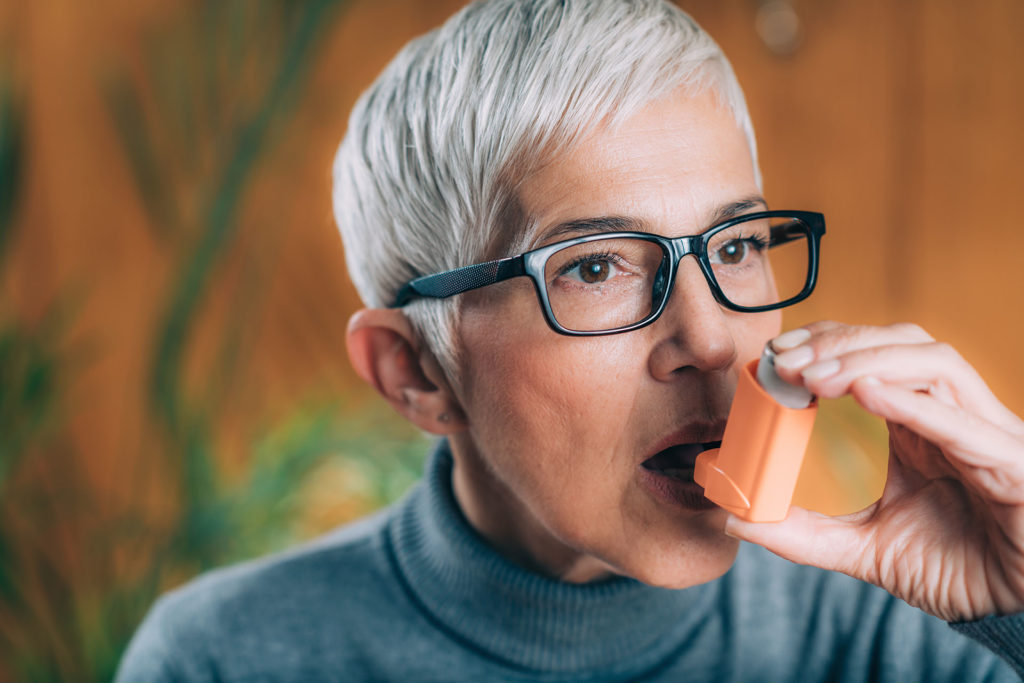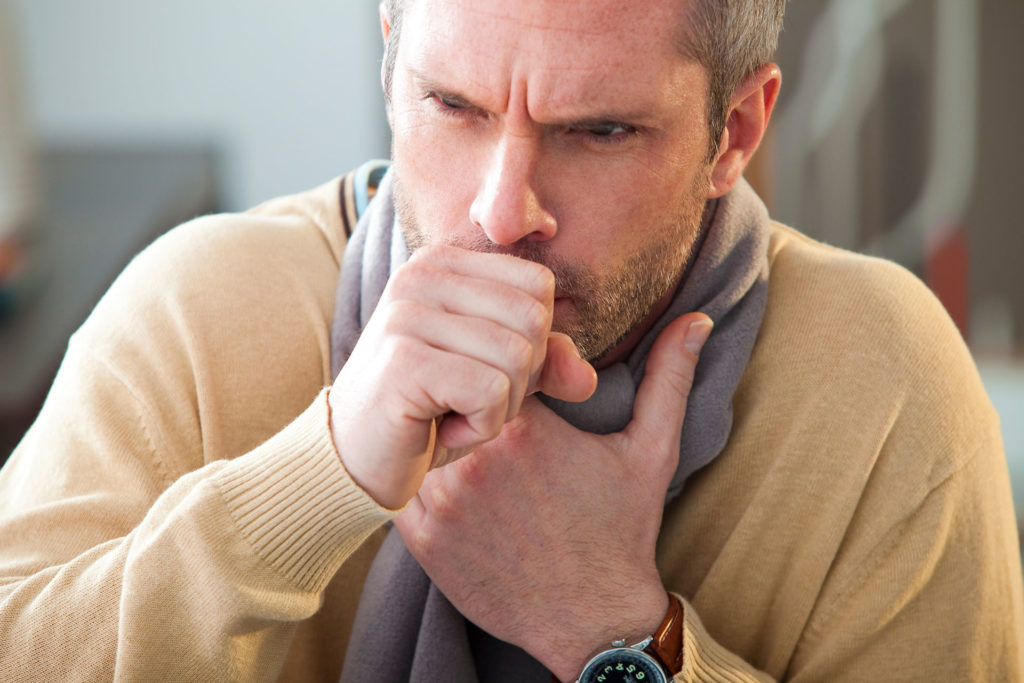Overview
Chronic obstructive pulmonary disease, also known as COPD, affects 15.7 million Americans. It was the fourth leading cause of death in the United States in 2018. It is a group of diseases that cause blockage in the airflow. It can lead to breathing problems caused by long-term exposure to gasses like tobacco smoke. The gasses irritate the airways or contain particulate matter.
COPD includes the conditions emphysema and chronic bronchitis.
Emphysema is a condition of the lungs that causes shortness of breath. The alveoli are damaged in the lungs. The main causes of emphysema are smoking and air pollution.
- Chronic bronchitis occurs from long-term inflammation of the breathing tubes in the lungs. The inflammation makes the lungs produce too much mucus. This can make a person cough a lot and is usually diagnosed among smokers.
COPD can affect all parts of a person’s life. When diagnosed with COPD, people can experience:
- Fatigue
- Shortness of breath
- Social isolation due to limited physical activity
- Depression and anxiety from isolation and stigma
Getting a diagnosis of COPD is not the end of the world because it is treatable. With proper management under a doctor’s guidance, most people can achieve a good quality of life. Proper treatment can reduce complications and the risk of developing other medical conditions.
Patients may work with their physician to develop an action plan. The action plan allows the patient to fill out how they feel with COPD each day. Based on the symptoms, the plan gives the patient an action to take to help manage their COPD.
Causes
COPD occurs over time with exposure to lung irritants. The main cause of COPD is smoking and 85% to 90% of cases of COPD diagnosis are due to cigarette smoke.
When a person smokes a cigarette, around 7,000 chemicals go into the lungs. Cigarettes contain a lot of toxins that are dangerous to a person’s health.
Another cause of COPD is the environment that people live and work in. That environment of contaminated air has irritants and harmful chemicals. Air pollution, dust, fumes, and chemical exposure contribute to the development of COPD.
Second-hand smoke is also a contributor to COPD. So even if a person has never smoked, that person can develop COPD if they are around people who smoke.
Some patients that have COPD have a genetic condition called alpha-1 antitrypsin deficiency. This is an inherited condition passed from parent to child and occurs when there is a lack of alpha-1 antitrypsin protein in the blood. This protein protects the lungs from inflammation.
Symptoms
COPD occurs over time. Most symptoms do not present themselves until severe lung damage has occurred. The symptoms will continue to get worse over time especially if a person is a tobacco smoker and continues to smoke.
Symptoms to be aware of include:
- Having chest tightness.
- Shortness of breath during physical activities.
- Wheezing while breathing.
- A decrease in energy.
- Weight loss occurs when not trying to lose weight.
- Notice swelling in the feet, ankles, or legs.
- Having a chronic cough that has mucus that might be clear, white, yellow, or greenish.
People who have COPD often experience symptom flare-ups known as exacerbations. Exacerbations may need intensive treatment for a few days or weeks.
Exacerbations make a COPD sufferer very sick and they might need to go to the hospital to get treatment. The typical treatment regimen involves using oxygen or nebulizer treatment.
COPD monitoring is necessary. If symptoms are not improving, a follow-up needs to happen with a physician. Infections cause COPD symptoms. So pay close attention if a fever develops or if there is a change in mucus color.
Treatment
COPD does not have a cure. Current treatments help slow down the progression of COPD and help to stabilize symptoms. Treatments can lessen the impact on a person’s life with COPD.
Proper treatment can help with the following:
- Decrease and get rid of symptoms.
- Reduce the harshness of exacerbations.
- Increase stamina during physical activity.
There are several treatments for COPD, which can include:
- Quit smoking for those who smoke.
- Avoid areas that are for smokers in the home and at work.
- Avoid high traffic areas for air pollution at home and at work.
- Take all prescribed medications.
- Get the flu and pneumococcal vaccines to reduce the possibility of lung infections.
- Get the COVID-19 vaccination to help reduce lung inflammation caused by the virus.
- Lung therapy for oxygen supplementation.
- Non-invasive ventilation therapy at home to reduce hospitalization.
- Surgery or lung transplant is an option for severe cases.
Many people diagnosed with COPD have mild symptoms. They may not need treatment other than to quit smoking. However, quitting smoking is not easy to do. It can be difficult for anyone, particularly if the patient has failed in the past. Patients should talk with their doctors about the best ways to quit smoking.
Some of the more popular methods of smoking cessation include:
- Nicotine patches or gum.
- Medications to help reduce urges.
- Support groups for smokers.
- Getting support from family and friends to stay on track.
Pulmonary rehabilitation is another treatment option. It helps people build back their strength so they can enjoy active lives. This treatment helps a patient increase lung capacity and function. It also helps reduce complications with COPD, which will help them achieve physical activities with less shortness of breath.
A healthcare team administers this rehabilitation according to each patient’s specific needs. A program could include:
- Nutritional advice on diets that can help COPD conditions.
- Exercise training to help increase lung capacity.
- Psychology support to help with change in lifestyle.
Medications
There are different types of medications that treat COPD. These medications are taken daily or on an as-needed basis. The medication categories are as follows:
Bronchodilators
Bronchodilators help relax muscles in the airways. This helps relieve coughing and shortness of breath to help a person breathe easier.
These include:
Ventolin HFA
Ipratropium
Levalbuterol
Aclidinium
Arformoterol
Formoterol
Indacaterol
Tiotropium
Salmeterol
Umeclidinium

Inhaled Steroids
These medications help reduce the inflammation in the airways and help reduce exacerbations. These include:- Flovent
- Budesonide
Combination Inhalers
Some patients with COPD need a combination of bronchodilators and inhaled steroids. These medications include: Other medications that include more than one bronchodilator include:- Duaklir Pressair
- Combivent Respimat
- Bevespi Aerosphere
- Utibron
- Stiolto Respimat
- Anora Ellipta

